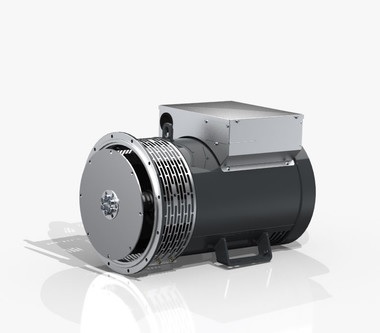Replacing or choosing an alternator, i.e. the part of the current generator that transforms the energy of the engine into electricity, can leave you unsettled given the wide variety of models available.
It is important first of all to note that the current alternator can change for voltage, voltage, design, type of voltage regulator, number of poles, socket board and much more.
But let’s go in order to have a clear and complete overview of the world of alternators!
Replacing an alternator
If you simply want to replace the alternator with a new one, it is ideal to tell us the serial number of the alternator: often you will be able to trace the exact characteristics of the original model, thus avoiding the wrong model or construction of the alternator!
Alternator voltage and voltage
The alternators sold on the market usually have 230V (single-phase) or 400V (three-phase) base voltage, so it is important to choose the alternator with the voltage you need.
There are also low voltage alternators (24V, 35V, 48V, 72V) although they are less common and more expensive.
Type of voltage regulator
On modern alternators are connected voltage regulators, which serve to make the current stable, thus avoiding ruining the equipment that you connect to us, especially electronic equipment such as computers or smartphones.
They range from less precise regulators, such as compound and capacitor regulators, to sophisticated models with AVR (Automatic Voltage Regulator) and DSR (Digital Voltage Regulator) with a voltage surge tolerance of 1% more or less.
Alternator Power
The power of the alternator depends directly on the power of the engine to which it is to be connected: so a 6 KVA engine must be connected to an alternator of more or less the same power.
Large differences in power should be avoided: if the alternator chosen is too small there is a risk of ”burning” it if it is too large, the power produced will still be based on the power of the engine so you would throw money at it unnecessarily!
A good tip is to take the alternator slightly oversized, so as not to strain it too much and make it last longer.
Number of poles
The vast majority of alternators have 2 or 4 poles. The 2 poles are suitable for 3000 rpm motors, while the 4-pole alternators are for 1500 rpm motors.
Bear in mind that a 3000 rpm 50 Hz alternator can be set at 60 hz and 3600 rpm.
How to choose the alternator – Construction forms
Perhaps the point that generates more indecision in less experienced clients, to whom we recommend to ask for advice from our staff through the appropriate contact form (link).
Each engine has a type of connection to be connected to the alternator so you need to pay attention to this aspect; an alternator model can also have 15 to 20 different designs!
We always recommend that you check the desired alternator design with the help of the data sheets.
The most common designs are
– J609a and J609b with conical connection: generally used for alternators with limited power, the size depends on the diameter of the cone expressed in millimetres;
– B3/B9 with conical connection: the connection is always conical, but the diameters are larger so they are used for small-medium alternators;
– SAE or STD single bearing: the alternator is fixed to the engine with metal discs. It is the most common attachment for industrial and large-sized alternators.
– B14 twin-bearing alternator: the alternator with twin-bearing connection is distinguished by the protruding shaft to which the engine is connected with belts or pulleys. It is widely used for special applications such as on fishing boats, in agriculture and in general when the engines are dated or modified on site.
Customizations
The alternators are customizable with gripping panels, additional impregnations to better resist water, flanges for PTO revolutions, voltmeters, special windings and many other choices on request!
Visit our e-Commerce website to see the range of alternators that can be ordered!

